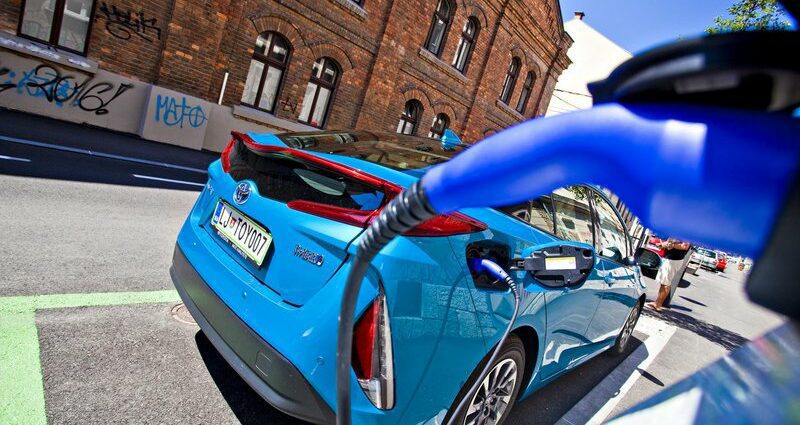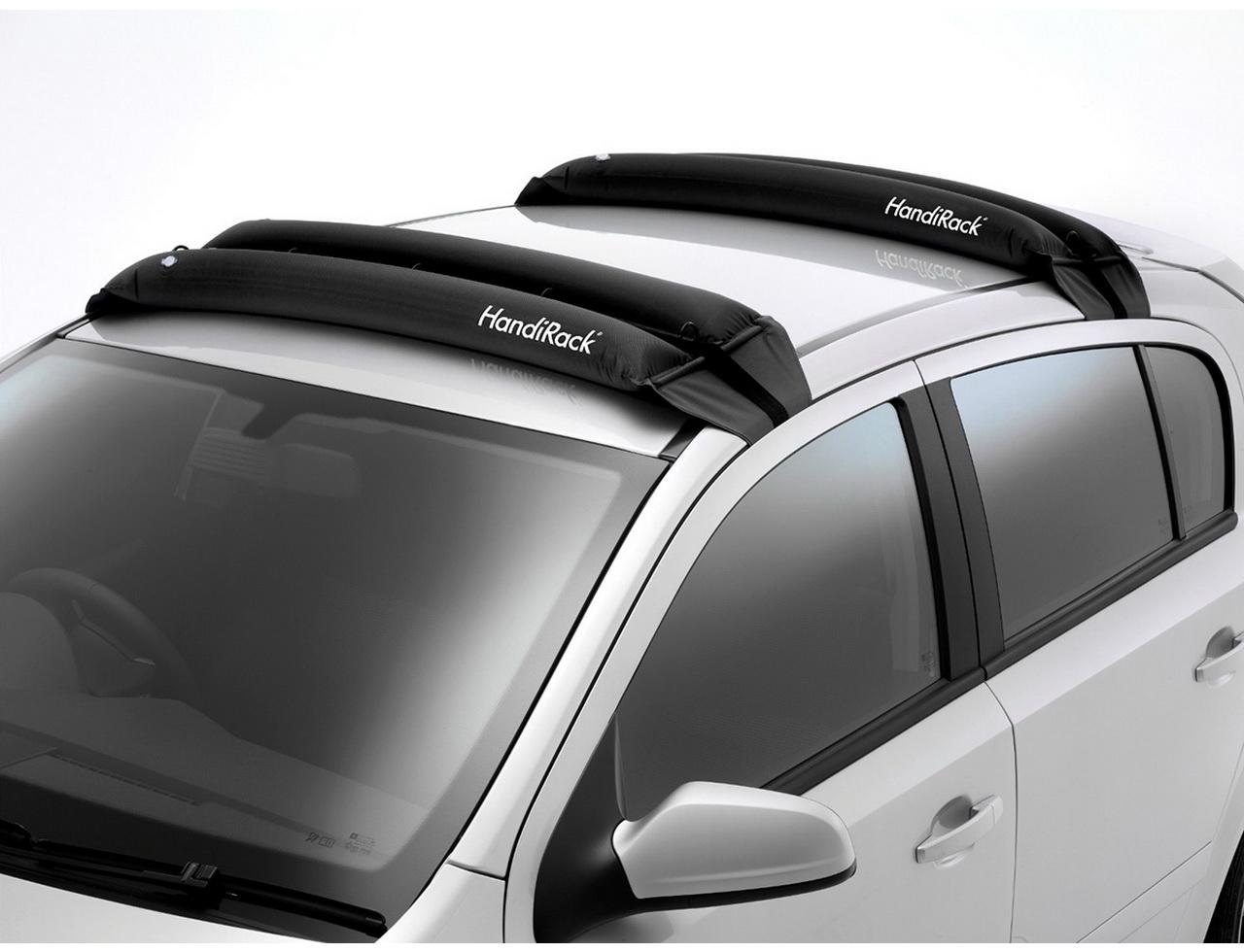
Test: Toyota Auris Hybrid 1.8 VVT-i Sol
Content
It's alternative technologies that Toyota is still committed to body and soul, a bit poetically. Therefore, it should come as no surprise that they intend to sell gasoline, turbodiesel and hybrid Auris in equal proportions. Yes, you read that right, they plan a third of sales to be a gasoline-electric hybrid like the one pictured here.
Are they crazy or do they have a trick up their sleeve that people don't know about yet? You know what they say, hybrids are expensive because of the sophisticated technology only suitable for technophiles and, above all, with a battery that is more environmentally hazardous than cars with classic combustion engines. Well, Toyota says that the price of their Auris hybrid with Luna hardware starts at € 18.990 (promotional price), which is easier to drive than a classic manual car (which is true) and that the batteries do pollute the environment. but the exhaust gases of a turbodiesel must even be carcinogenic, not to mention the noise. A slightly provocative question: who pollutes our environment more?
It is assumed that the hybrid will be bought mainly by those who have so far relied on the low consumption of a turbodiesel, but at the same time they are worried about noise, shaking and poor heating of the cabin on a cold winter morning. This may sound a little odd at first, but after a closer look, Toyota is right. Why not? The origins when only technophiles bought hybrids are long gone: just look how many Toyota with alternative engines are already driving in our cities. And among them there are taxis that travel many miles a year.
In the Auris, the hybrid technology was simply refined and the rest was created on a blank sheet of paper. That the Auris is a descendant of the Corolla, the world's best-selling car, is no longer so important to a newcomer due to the changed shape of the exterior and the new route of Toyota. The route was drawn up by Akio Toyoda, who says that cars should evoke emotions and delight every day with driving dynamics.
Toyoda is the president and CEO of Toyota Motor Corporation, which also loves to sit in a race car, so he knows what he's talking about. One cannot lose sight of the fact that the Toyota GT 86 was also created thanks to him. The design of the Auris is completely different from its predecessor: 50 millimeters lower, with 10 millimeters less wheel-to-wing distance, a lower center of gravity and better aerodynamics. Through the use of stronger steel, despite better safety (with the Sol equipment you get five airbags, side airbags and standard VSC), they have reduced the overall weight by an average of 50kg, and with the hybrid by as much as 70kg. It should be noted that the torsional strength of the case is 10% higher than that of its predecessor, which can also be attributed to more weld points. You like it Well, not a few of you say that your previous Auris was your favorite...
If you think they only made a revolution from the outside, you have to get behind the wheel. The dashboard has become much more vertical, and the tall, convex center console with an open gear lever has gone to the dustbin of history. The gauges are transparent, the large touchscreen is at your fingertips, and the digital clock is designed more for passengers than for the driver. The position behind the steering wheel is significantly better, mainly due to a lower position of 40 millimeters and a longer movement of the seat and steering wheel, which is more vertical by two degrees.
The only other very slight complaint was the longitudinal displacement of the steering wheel, which could have been more. For the rest, let's be honest: Toyota did its best. With Sol equipment you get a lot of equipment (for the test car, for example, navigation, hands-free system, cruise control, two-way automatic air conditioning, S-IPA semi-automatic parking, etc.), as well as leather and heated front seats ... And the fact that leather is really everywhere where the passenger comes into contact with the car is evidenced by the leather steering wheel, armrest, we even put it on the dashboard along with white seams and along the edges of the seat so that the buttocks do not slip. Apparently very thoughtful. The rear seats have 20 millimeters more knee room, while the boot space is on par with the competition. Also considered a hybrid.
In addition to the 1,8-liter petrol engine, the Auris Hybrid or HSD also features a battery-powered electric motor. The battery is located under the rear seat, so it practically does not take up space either in the cabin or in the luggage compartment. The motors are linked by a continuously variable transmission, which always ensures the perfect transmission. Unfortunately, the driver has nothing to say, as there are no steering wheel controls or gear lever to allow manual shifting (pre-set gears, of course), and at wide open throttle the noise of such a system gets in the way. You know how a sliding clutch is.
Well, Toyota was aware of these shortcomings, so they put a lot of effort into making the system work better so that the noise from under the hood is more in line with the increase in vehicle speed during acceleration. Okay, the noise at full throttle is still great, so it's more natural and definitely more enjoyable. But with soundproofing in a quiet ride, they did a real miracle: the tires are only audible when wandering around the city, since it is often not possible to detect a switch between a gasoline engine and an electric motor (or vice versa). It's good that the green light warns about this! The driver's only option is to select three programs: electric vehicle (EV mode), ecological program (ECO mode) or full power (PWR mode), and they only work when all conditions are met.
This means that you cannot drive 70 km / h in electric mode alone or that the environmental program helps you at full throttle ... It's a shame that the speed limit for electric mode is not 60 km / h (according to the speedometer, of course), because for our city flows of 50 km / h (when starting a gasoline engine) are too small. However, if the Prius-style Auris plug-in hybrid comes to market, which allows electric propulsion at a speed of at least 100 km / h, and in addition, the government adds a subsidy, it will be a viable alternative. to the current turbodiesels!
The steering is electric, of course, but despite the better gear ratio (14,8 over the previous 16), it's still too indirect for a real feel. We think the sportier Auris TS, due to be unveiled in August, will be much better in this regard. The chassis (the best versions, including the hybrid, have a multi-link rear axle, the base 1.33 and 1,4D are semi-rigid only) are quite satisfactory, but it is probably clear that it is not yet at the level of the Ford Focus. But thanks to Toyota, Toyota is making great strides in this area.
Lower price for the best car, excellent warranty conditions and fuel consumption that only the most economical turbo diesels can handle: are you still sure the hybrid is not for you?
Text: Aljosha Darkness
Toyota Auris Hybrid 1.8 VVT-i Sol
Basic data
| Sales: | Toyota Adria Ltd. |
|---|---|
| Base model price: | 23.350 € |
| Test model cost: | 24.550 € |
| Power: | 73/60 kW (99/82 KM) |
| Acceleration (0-100 km / h): | 11,4 with |
| Maximum speed: | 180 km / h |
| Mixed flow ECE: | 6,2l / 100km |
| Guarantee: | 3 years or 100.000 5 km total and mobile warranty, 3 years warranty for hybrid components, 12 years warranty for paint, XNUMX years warranty against rust. |
| Systematic review | 15.000 km |
Cost (up to 100.000 km or five years)
| Regular services, works, materials: | 1.814 € |
|---|---|
| Fuel: | 9.399 € |
| Tires (1) | 993 € |
| Loss of value (within 5 years): | 9.471 € |
| Compulsory insurance: | 2.695 € |
| CASCO INSURANCE (+ B, K), AO, AO + | 5.440 ( |
| Calculate the cost of auto insurance | |
| Buy up | € 29.758 0,30 (km cost: XNUMX €) |
Technical information
| engine: | 4-cylinder - 4-stroke - in-line - petrol - front mounted transversely - bore and stroke 80,5 × 88,3 mm - displacement 1.798 cm3 - compression 13,0:1 - maximum power 73 kW (99 hp) .) at 5.200 rpm - average piston speed at maximum power 15,3 m / s - specific power 40,6 kW / l (55,2 hp / l) - maximum torque 142 Nm at 4.000 rpm min - 2 camshafts in the head (chain) - 4 valves per cylinder. electric motor: permanent magnet synchronous motor - rated voltage 650 V - maximum power 60 kW (82 hp) at 1.200-1.500 rpm - maximum torque 207 Nm at 0-1.000 rpm. Battery: Nickel-Metal Hydride rechargeable batteries with a capacity of 6,5 Ah. |
|---|---|
| Energy transfer: | the engines are driven by the front wheels - continuously variable automatic transmission (CVT) with planetary gear - 7J × 17 wheels - 225/45 R 17 H tires, rolling distance of 1,89 m. |
| Capacity: | top speed 180 km/h - 0-100 km/h acceleration in 10,9 s - fuel consumption (ECE) 3,7 / 3,7 / 3,8 l / 100 km, CO2 emissions 87 g / km. |
| Transportation and suspension: | limousine - 5 doors, 5 seats - self-supporting body - front single transverse levers, spring legs, triangular transverse rails, stabilizer - rear multi-link axle, coil springs, stabilizer - front disc brakes (forced cooling), rear disc mechanical rear wheel brake pedal left) - steering wheel with rack and pinion, electric power steering, 2,6 turns between extreme points. |
| Mass: | empty vehicle 1.430 kg - Permissible gross vehicle weight 1.840 kg - Permissible trailer weight with brake: n.a., without brake: n.a. - Permissible roof load: n.a. |
| External dimensions: | vehicle width 1.760 mm - vehicle width with mirrors 2.001 mm - front track 1.535 mm - rear 1.525 mm - driving radius 10,4 m. |
| Inner dimensions: | width front 1.480 mm, rear 1.430 - front seat length 510 mm, rear seat 490 mm - steering wheel diameter 370 mm - fuel tank 45 l. |
| Box: | 5 Samsonite suitcases (total volume 278,5 l): 5 places: 1 × backpack (20 l); 1 × aviation suitcase (36 l); 1 suitcase (68,5 l) |
| Standard equipment: | driver and front passenger airbag - front side airbags - front air curtains - driver's knee airbag - ISOFIX mounts - ABS - ESP - power steering - automatic air conditioning - power windows front and rear - electrically adjustable and heated rear-view mirrors - trip computer - Radio, CD and MP3 player - Multifunction steering wheel - Remote central locking - Front fog lamps - Height and depth adjustable steering wheel - Split rear seat - Height adjustable driver's seat. |
Our measurements
| T = 1 ° C / p = 1.014 mbar / rel. vl. = 59% / Tires: Bridgestone Blizzak LM-32 225/45 / R 17 H / Odometer status: 4.221 km | |
| Acceleration 0-100km: | 11,4s |
|---|---|
| 402m from the city: | 17,2 years ( 127 km / h) |
| Maximum speed: | 180km / h (D) |
| Minimum consumption: | 4,3l / 100km |
| Maximum consumption: | 6,8l / 100km |
| test consumption: | 6,2 l / 100km |
| Braking distance at 130 km / h: | 70,4m |
| Braking distance at 100 km / h: | 42,6m |
| AM table: | 40m |
| Idling noise: | 20dB |
| Test errors: | unmistakable |
Overall rating (327/420)
When the Prius struggled for a furrow a few years ago, some were still laughing at Toyota. This is no longer the case today, and the Auris is proof that hybrids are becoming good, enjoyable cars.
Exterior (11/15)
There are no unknowns: whether you like it right away or not.
Interior (103/140)
Good materials, better driving position, great build quality and no compromise trunk.
Engine, transmission (49
/ 40)The transmission likes calm drivers, the electric power steering is too indirect.
Driving performance (56
/ 95)Driving a hybrid is much easier than people think, the braking feel is not real. There are no problems with exchange rate stability.
Performance (23/35)
It is not impressive at acceleration and top speed, it cuts better on flexibility.
Security (36/45)
There are no comments on passive safety, but there is not enough active cornering, xenon, active cruise control ...
Economy (49/50)
Relatively low fuel consumption, interesting price, five-year Toyota warranty.
We praise and reproach
proven technology
fuel economy with a quiet ride
price (hybrid in general)
better responsiveness and more attractiveness
materials used in the interior
Better CVT performance
ample trunk space despite the extra battery
S-IPA (semi) automatic parking system
with electricity, it only accelerates to 50 km / h
too indirect electric power steering
some do not like the new shape of the exterior
powertrain noise at wide open throttle
insufficient longitudinal rudder displacement

